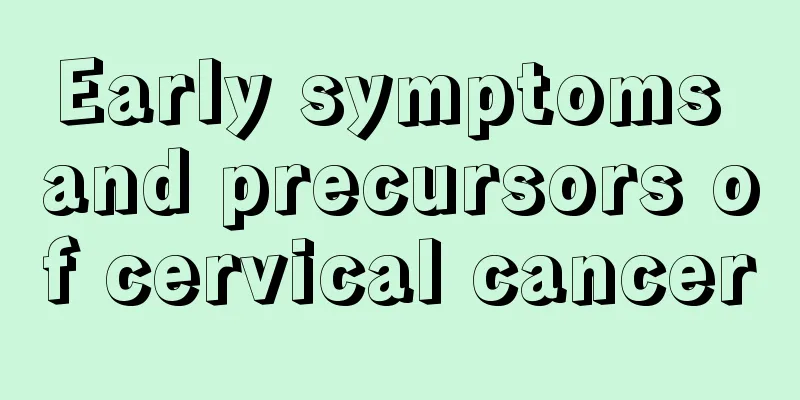What is the examination method for testicular cancer patients

|
Testicular cancer mainly occurs in young and middle-aged people, seriously affecting the patient's physical health. Severe cases can also lead to loss of fertility. The treatment of testicular cancer is very critical, and the examination of testicular cancer is also indispensable. So how should testicular cancer be examined? Next, let's learn how to examine testicular cancer. The main methods for testing for testicular cancer are as follows: 1. Diagnosis of testicular cancer through imaging 1. Ultrasound: B-ultrasound examination can accurately distinguish the size, shape, and presence of lumps of the testicles. It can also distinguish whether the swollen testicles are caused by inflammation, tissue edema, or tumors. It can also detect whether there are metastatic tumors behind the peritoneum. 2. Tumor marker determination: Tumor markers are antigens and other biologically active substances generated by tumor cells during the process of carcinogenesis due to the expression of oncogenes. They can be detected in the body fluids and excreta of tumor patients, but not or very little in normal tissues or benign diseases. The levels of tumor markers in the blood such as alpha-fetoprotein (AFP), human chorionic gonadotropin (B-HCG), and alkaline phosphatase (AKP) can be measured. Alkaline phosphatase is widely distributed in various organs of the human body, with the liver being the most abundant, followed by kidneys, bones, intestines, and placenta. This enzyme can catalyze the removal of 5' phosphate groups from nucleic acid molecules, thereby converting the 5'-P end of DNA or RNA fragments into 5'-OH ends. ) etc. These tumor markers can help detect testicular tumors. 3. Biopsy: A biopsy is the only way to confirm the presence of cancer. In most cases, the doctor makes an incision in the groin to remove the entire affected testicle. 2. Diagnosing testicular cancer based on symptoms 1. Hard testicles: What are the symptoms of early testicular cancer? If you touch your testicles with your hands, they feel like rocks and are very hard. This is significantly different from the symmetrical swelling and soft texture of the testicles when the testicles are usually inflamed. Hard testicles are an important symptom of early testicular cancer. 2. Testicular heaviness: Testicular heaviness is one of the symptoms of early testicular cancer. Since testicular tumors are formed by the massive growth of tumor cells, they are a substantial mass. When they grow to a certain size, the weight of the testicles increases suddenly, and the patient will feel heavy and fall, or even have difficulty walking. If you hold up the testicles with your hands, you will feel a certain weight. 3. Testicular enlargement: Testicular enlargement is also an important symptom of early testicular cancer. It is the result of the endless proliferation of tumor cells. The appearance of testicular enlargement is not symmetrical, sometimes it is very irregular, and the testicle on the side with the tumor can be particularly enlarged and protruding. 4. Negative light transmission test: What are the symptoms of early testicular cancer? Symptoms of early testicular cancer also include negative testicular light transmission test. Generally, when there is hydrocele, the light transmission of the renal capsule and testicles is enhanced, and the light transmission test is positive; but when the testicular tumor grows densely and solidly, there is no fluid inside, and the light transmission is greatly weakened, showing negative. 3. Self-examination for testicular cancer The best time to do a self-examination for testicular cancer is after bathing. This is because any local tension will cause the scrotum to shrink and affect the examination. After bathing, the scrotal skin is relaxed, making the examination easier and more accurate. Specific technique: Stand up. Let the scrotum droop naturally, hold up the scrotum with your palm, and observe and feel its size and weight. Gently pinch the testicle with both hands, with the thumb on top of the testicle and the index and middle fingers on the bottom. Gently rotate the testicle with the index and thumb to check its size, whether the surface is smooth, whether there are lumps, and whether there are differences between the left and right testicles. If there is an abnormal pea or pigeon egg-sized lump without pain, be vigilant and seek a specialist examination by a urologist as soon as possible. |
<<: What is the cause of testicular cancer
>>: What fruits can I eat if I have a pituitary tumor
Recommend
How to clean oil stains on clothes
When clothes are stained with oil, we will be par...
How long should I take potassium permanganate sitz bath after hemorrhoid surgery
Hemorrhoids have a great impact on the normal lif...
Can the foam box be placed in the refrigerator?
There are many things in life that can be stored ...
What is causing the pain between teeth
In daily life, pain between teeth is a common dis...
Is it dangerous to be diagnosed with teratoma during pregnancy?
With the promulgation of the second-child policy,...
How to prevent bladder cancer in life
The treatment of bladder cancer must be based on ...
Is nasal bleeding a symptom of nasopharyngeal carcinoma recurrence?
Nasopharyngeal cancer is highly harmful, so many ...
A's Weight Loss Method
Nowadays, there are more and more obese people, s...
The efficacy and function of Baifan
In our daily life, we often come into contact wit...
Can cherries treat gout?
Cherry is a very popular fruit. In my country, su...
Why is the tip of the tongue numb
Although numbness at the tip of the tongue is not...
Milk Block Potion Recipe
Milk potion is not easy to obtain and requires ex...
What are the consequences of slapping
Not every parent has enough patience, and childre...
What is the reason for pain in the left elbow joint
Pain in limb joints is common in our daily lives,...
Is it good to eat animal offal? What vitamins does it contain?
In life, I believe that many people like to cook ...









